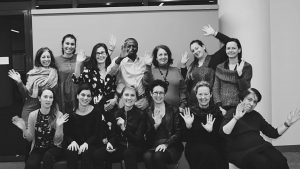Challenges in community engagement and managing heritage in the margins
by Yasaman SADEGHI
Encompassing the tangible and intangible remnants of the distant and recent past, heritage has immense potential for tying individuals, communities, and societies to the past and future. A number of heritage management practices, such as archeology, museology, conservation, restoration, and upholding traditions, can mediate the translation of the remnants of the past into a meaningful resource for the communities. We take pride in seeing a museum exhibiting relics of a long-gone culture. In visiting memorial monuments, we experience the grief of atrocities of the past in which we did not partake. In cooking traditional recipes for special holidays year after year, we enjoy a sense of connectivity to the past and project ourselves into the future, because we anticipate preparing the same traditional recipe the next time that the holiday comes around.
Heritage is nevertheless subject to the passage of time. A portion of this is attributable to the inherent vulnerability of the remains of the past: as time goes on, material artifacts are susceptible to disintegration and decay, stories may lose their color and fade away, and craftspeople may diminish in their skills and abilities. Another factor, which is less discussed but increasingly prominent, is due to the conditions of the time that may shift the perspectives on the heritage that are now held or require a new way of looking at the past to meet present-day needs.
Such vulnerability to the passage of time is ever more pertinent to marginalized communities. While consecutive changes in power often heavily impact the breadth and availability of the remains of the past, the changing ideologies, and goals – whether imposed by the authorities or emerging from the felt needs of the communities – increase the sensitivity of heritage to the passage of time. Heritage managers are skilled and knowledgeable practitioners who appreciate such vulnerabilities and dynamism and use a variety of techniques and methods to remedy some of the aforementioned problems. However, it is often difficult to reconcile the rapidly evolving needs and conditions of the communities with the institutional and scholarly understanding of heritage management. How, then, can heritage management adapt to the potential threats that the passage of time imposes on tangible and intangible heritage in the margins?
Community engagement is a deceptively complicated answer to this question, whose importance has been long acknowledged by heritage managers as well as global institutions. For instance, The Convention for the Safeguarding of Intangible Cultural Heritage issued by UNESCO in 2003 requires the member countries to “ensure the widest possible participation of communities, groups and, where appropriate, individuals that create, maintain and transmit such heritage, and to involve them actively in its management”. Applying community engagement in practice, however, proves to be challenging, especially when it comes to the margins.
At times, marginalized communities require a radical shift in perspective toward the past and future. For instance, a statue of a quintessential past figure and the annual celebrations around the statue in the town square may have been a source of pride and glory. Yet, there are myriad ways in which this very figure can be contested: the statue may be of someone whose influence on the community is no longer appreciated; the commemorations may have been mandated by a former authority that is no longer in power; new information may come to light through discovery or changes in the social consciousness that alter the interpretation of a given historical figure, ritual or celebration; the community may need a new source of inspiration and hope through remembering an event, person or object that is significant to them at the present moment. These are but a few reasons for which a community may contest, reject, or modify its heritage, creating a dire situation for the community and heritage managers.
Yet even though community engagement requires listening to and respecting the community in any heritage management practice, there are several obstacles to implementing community engagement not only to safeguard existing heritage but also to maintain or revise it throughout time in a sustainable and empowering manner: a piece of heritage that the community rejects may be deemed as valuable according to the ingrained approaches, techniques, and practices of heritage managers; the community members may not be willing, ready or able to participate in heritage management; they may require fast, immediate action towards heritage that cannot be accommodated through the often slow and bureaucratic processes involved in heritage management; their everyday realities may be detrimental to upholding a heritage that they will intend to preserve.
Community engagement, then, is a vital yet complicated aspect of heritage management. Attempting to separate or pierce a community to a heritage while disregarding their present-day conditions and requirements has proven to be detrimental, not only to the community itself but also to the heritage that we may insist on conserving as it is. However, it is helpful to remember that heritage is dynamic rather than static, and community engagement is a process rather than a goal. In this sense, being subject to the passage of time may pose problems on heritage, but it is nonetheless an inescapable feature of it, which heritage managers increasingly embrace. Amidst the rapidly evolving needs and requirements of communities, thus, heritage management can engage with communities and mediate the relationship between the community and the remnants of the past rather than striving for an unattainable ‘perfection’.

